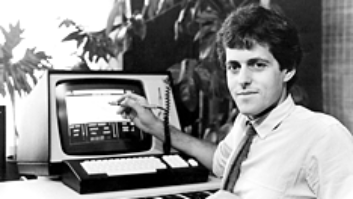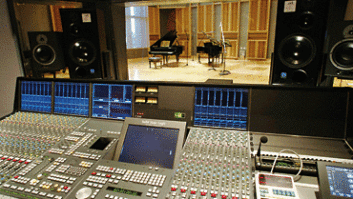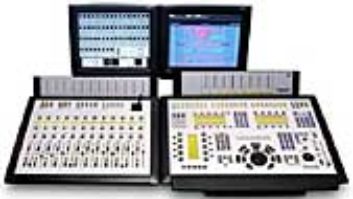Representing millions of R&D dollars and more than two yearsof development, Fairlight’s QDC (Quad Digital Channel) technologyis designed to greatly enhance the performance, speed, audioquality, graphics resolution and DSP power of the company’s digitalaudio workstations, editors and recorders. Much more than anupgrade, QDC literally transforms the architectures of Fairlight’sMFX3plus, FAME2 and Prodigy2 systems into workstations with moretracks, more buses, faster disk access and real-time processing onall channels. QDC has been integrated into all new Fairlightsystems shipped since September 2000, with the company’s flagshipMerlin being initially designed using the technology.
HOW IT WORKS
Essentially, the QDC card replaces the original Digital ChannelCard (DCC) with 12 times the DSP performance. Each QDC has eightAnalog Devices 21061 SHARC devices and 128 MB of Waveform memory.Real-time, 40-bit, floating-point math is used to maintain headroomduring complex algorithms that involve many multiplication steps. Asingle QDC card has enough DSP for a 32-track workstation like theFAME1 or the largest configuration of the MFX3plus.
The system rack used in a QDC conversion holds up to four QDCcards but is built for (and the architecture firmware supports) upto eight QDCs. Each card is individually configured for theparticular Fairlight product by way of plug-in“daughter” boards specified for the user’s particularI/O and disk requirements. If required, then multiple rack systemsof QDC cards can be supplied. Fairlight’s philosophy is to providea “future proof” platform for audio workstations thatstay current for up to 10 years. To this end, QDC makes use ofprogrammable logic from Altera and Xilinx. These devices allowelectronic circuit designs to be expressed as software code andloaded on chips. Future significant changes and enhancements tocircuitry can be made by way of software downloads rather thancomponent or circuit board replacements.
MAIN FEATURES
Enabling huge gains in productivity, all QDC-enhanced Fairlightproducts operate the same as before with no perceptible changes inthe operator’s commands, work surface, tools or job process. QDCprovides seamless, gapless punch-in/-out on all 48 trackssimultaneously at 48kHz sample rate and 24-bit depth. This wouldrequire playback of 96 tracks of audio from a single hard drive.Andrew Brent at Fairlight confirms that using QDC’s new Ultra/WideSCSI and the new 15,000 rpm hard drives, it is routine to play upto 145 audio tracks at a time from a single drive. Support for upto 18 SCSI devices is accommodated for.
QDC offers simultaneous, real-time crossfading of unlimitedduration on all 48 tracks. Another advantage to real-time DSP is,unlike, say, Pro Tools, with Fairlight there is no rendering andtherefore no waiting. There are also no delays waiting for audio to“cache” for playback — after a worst-case Locatecommand, buffering 48 tracks of audio takes less than a second.Further, all waveforms are displayed instantly. A MFX3plus with QDCwill show 48 tracks on a single high-resolution screen.
The new AD/DA converters use 128 oversampling and up to 96kHzsample rates. Frequency response is rated at 10 to 20k Hz, +0dB/-0.25 dB. THD+N is less than 0.0008%, while thru noise ismeasured at less than -110 dB A-weighted. Other sonic enhancementsinclude a sub-nanosecond, super-low jitter clock that exceeds AES-3spec and a power supply that (after power-up) re-clocks to thesession’s sample rate clock. This clever design eliminatesinterference that can occur in computer-based audio systems, wherethe switching power supply’s clock signal radiates throughout thecabinet. A sample-rate converter can automatically convert allincoming digital audio to the specified output sample rate up to 96kHz, while maintaining correct timestamp or timecode information.Also, 16/20/24-bit files can be recorded and mixed freely in anyproject at any time.
QDC systems are compatible with existing MediaLink systems, withall gear sharing the same network, projects and SFX databases.However, QDC-enhanced systems enjoy double the network bandwidthacross the same 100 Base-T connection. Again, this is in keepingwith one of Fairlight’s basic tenets: to provide the best possibleproducts and a continual upgrade path as significant improvementsand new technologies become available.
Fairlight USA, 844 N. Seward Street, Hollywood, CA 90038;323/465-0070; fax 323/465-0080; www.fairlightesp.com.
Barry Rudolph is an L.A.-based recording engineer. Visit hisWebsite at www.barryrudolph.com.




